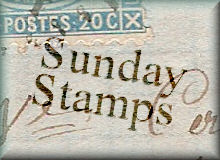 This post is for Viridian´s Sunday Stamps, Theme: anything you want.
This post is for Viridian´s Sunday Stamps, Theme: anything you want."If bees disappeared off the surface of the globe then man would only have four years of life left.” (Albert Einstein)
I thought of writing about these stamps because of my son. He is almost 2 years old, and one of the other days he was looking so fascinated at these small creatures that I was really impressed and looked myself a bit closer. Since immemorial times, bees behaviour has inspired myths, legends, tales, poems and fables. At the same time the bee inspired love and was loved by both gods and human beings.
Bees have a vital role in the pollination (reproduction) of thousands of plants species. For 50 million years since they are present on the Earth, bees have contributed to the evolution of the vegetal kingdom, as it exists today.
 |
| minisheet of 4 stamps with illustrated attachment and gold foiling |
The European honey bee (Apis mellifera mellifera) is shown on the stamp having a face value of RON 0.50. This is a bee with a special resistance to winter’s cold and an increased tendency of defense against enemies. It collects a large volume of pollen and lives longer than other bees. It also has the capacity to fly long distances. This bee lives in France, Belgium, the Netherlands, Luxembourg, the Great Britain, Ireland, Norway, Sweden, Denmark, Germany, Poland, the Czech Republic, North of Switzerland, North-West of Austria, Belarus, North of Ukraine, Latvia, Lithuania, Estonia and Russia.
The Italian honey bee (Apis mellifera ligustica) is shown on the stamp having a face value of RON 2.10. This bee spreads through North America, South America and Southern Europe. It is mild and produces honey in considerable amounts. It lives in large colonies needing more food resources to survive the winter.
The Slovenian honey bee (Apis mellifera carnica) is shown on the stamp having a face value of RON 3.10. It is a sub-species of the European honey bee originating from Slovenia but it may be found in Austria, Hungary, Croatia, Bosnia and Herzegovina, Serbia and Romania.
The Caucasian honey bee (Apis mellifera caucasica) is shown on the stamp having a face value of RON 4.30. It is a larger bee than the average; it is mild and hard working. It is usually found in the Caucasus Mountains.
Title: Honey bees
Date of Issue: 22 January 2010
Country: Romania
Source: http://www.romfilatelia.roDenominations: 50b, 2L10, 3L10, 4L30


"Worker Bees"--another type of insect worker.
ReplyDeleteWonderful! we tend to overllok these little creatures. thanks for participating.
ReplyDeleteBeautiful stamp set!
ReplyDeletePostcards Crossing
I love bees and these are great stamps! I was watching them in the garden the other day and even there I could see three different types.
ReplyDeleteThese stamps are beautiful. I've got to get my hands on this series! Yes, bees are so crucial to our well-being. I fear for their future (and ours) Thanks for sharing!
ReplyDelete